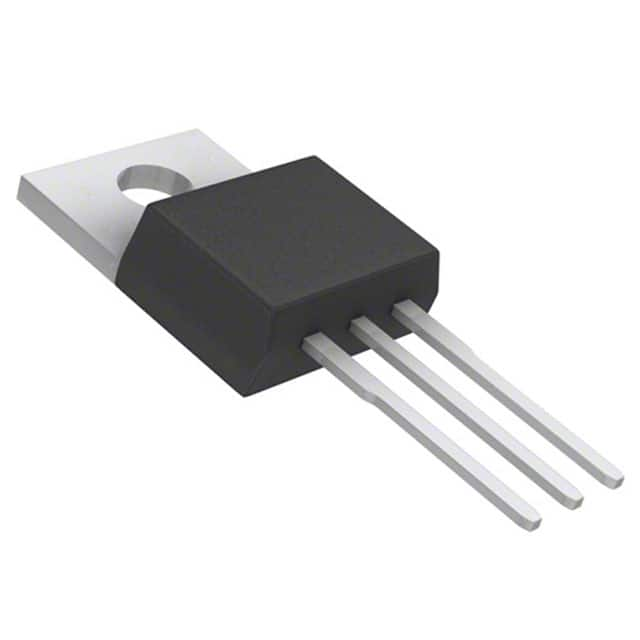Viz Specifikace pro podrobnosti o produktu.

TIP47TU: Product Overview and Specifications
Introduction
The TIP47TU is a versatile electronic component that belongs to the category of power transistors. This product is widely used in various electronic applications due to its unique characteristics and functional features. In this entry, we will provide an overview of the TIP47TU, including its basic information, specifications, detailed pin configuration, functional features, advantages and disadvantages, working principles, application field plans, and alternative models.
Basic Information Overview
- Category: Power Transistor
- Use: Amplification and Switching Applications
- Characteristics: High Voltage, High Current Capability
- Package: TO-220
- Essence: NPN Bipolar Junction Transistor
- Packaging/Quantity: Bulk Packaging, Quantity Varies
Specifications
- Voltage - Collector Emitter Breakdown (Max): 100V
- Current - Collector (Ic) (Max): 10A
- Power - Max: 40W
- DC Current Gain (hFE) (Min) @ Ic, Vce: 15 @ 3A, 4V
- Transition Frequency: 3MHz
- Operating Temperature: -65°C ~ 150°C
Detailed Pin Configuration
The TIP47TU transistor has a standard TO-220 package with three pins: 1. Collector (C): Connected to the positive supply voltage. 2. Base (B): Controls the transistor's conductivity. 3. Emitter (E): Connected to the ground or negative supply voltage.
Functional Features
- High Voltage Capability
- Low Saturation Voltage
- Complementary PNP Type Available (TIP42TU)
- Suitable for Audio Amplifier and High Power Linear Switching Applications
Advantages and Disadvantages
Advantages
- High Voltage and Current Handling Capacity
- Low Saturation Voltage
- Complementary PNP Type Available
- Versatile Applications in Amplification and Switching Circuits
Disadvantages
- Relatively Large Package Size (TO-220)
- Limited Frequency Response for High-Frequency Applications
Working Principles
The TIP47TU operates based on the principles of bipolar junction transistors. When a small current flows into the base terminal, it controls a larger current between the collector and emitter terminals, allowing for amplification and switching functions.
Detailed Application Field Plans
The TIP47TU is commonly used in the following application fields: - Audio Amplifiers - Linear Regulators - Motor Control Circuits - High Power Switching Circuits
Detailed and Complete Alternative Models
- TIP42TU: Complementary PNP Type
- TIP31TU: Lower Voltage and Current Rating
- TIP122TU: Higher Current Rating
In conclusion, the TIP47TU power transistor offers high voltage and current capabilities, making it suitable for various amplification and switching applications. Its unique characteristics, functional features, and versatile applications make it a valuable component in electronic circuit design.
Word Count: 443
Seznam 10 běžných otázek a odpovědí souvisejících s aplikací TIP47TU v technických řešeních
What is TIP47TU?
- TIP47TU is a type of thermal interface material commonly used for heat dissipation in electronic devices.
How does TIP47TU work?
- TIP47TU works by filling the microscopic gaps between the heat-generating component and the heat sink, improving thermal conductivity and heat transfer.
What are the key properties of TIP47TU?
- TIP47TU exhibits high thermal conductivity, low thermal resistance, good adhesion, and stability over a wide temperature range.
In what applications is TIP47TU commonly used?
- TIP47TU is commonly used in applications such as computer processors, LED lighting, power electronics, and automotive electronics.
How do I apply TIP47TU to a heat-generating component?
- TIP47TU can be applied using methods such as screen printing, dispensing, or pad printing, ensuring even coverage for optimal heat transfer.
What are the recommended storage conditions for TIP47TU?
- TIP47TU should be stored in a cool, dry place away from direct sunlight and moisture to maintain its properties.
Can TIP47TU be reused once it has been applied?
- TIP47TU is typically not designed for reuse, as it may lose its effectiveness after being removed from the application surface.
Is TIP47TU electrically conductive?
- TIP47TU is non-electrically conductive, making it safe to use in electronic applications where electrical insulation is required.
What are the potential challenges when using TIP47TU?
- Challenges may include proper application technique, avoiding air entrapment, and ensuring compatibility with different materials.
Are there any safety considerations when handling TIP47TU?
- It's important to follow the manufacturer's safety guidelines, which may include wearing gloves and working in a well-ventilated area when handling TIP47TU.

